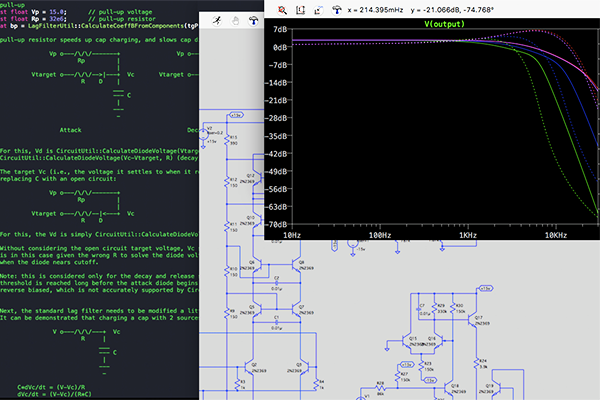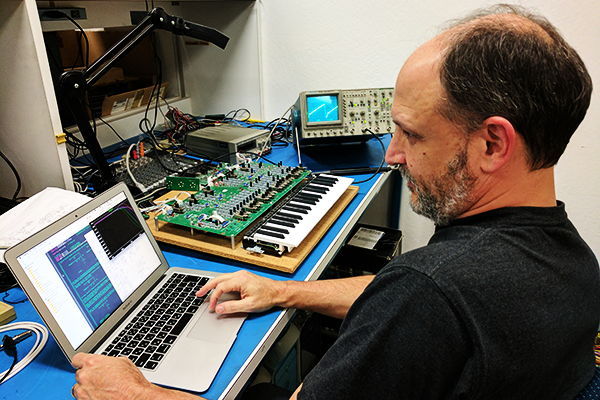

SoundCloud

KORG Collection 6 for Mac/PC
SOFTWARE INSTRUMENTS
Support
Learn More
Related Products
 microKEY2
microKEY2 microKEY Air
microKEY Air nanoKEY Studio
nanoKEY Studio- nanoKONTROL Studio
- TRITON / TRITON Extreme for Mac/Win
- ARP ODYSSEY for Mac/Win
- MS-20 V2 for Mac/Win
- Polysix V2 for Mac/Win
- Mono/Poly V2 for Mac/Win
- M1 V2 for Mac/Win
- WAVESTATION V2 for Mac/Win
- MDE-X V2 for Mac/Win
- miniKORG 700S for Mac/Win
- Prophecy for Mac/Win
- KAOSS PAD for Mac/Win
- microKORG for Mac/Win
- ELECTRIBE-R for Mac/Win
- Keystage
- ARP 2600 for Mac/PC
- VOX Super Continental
- EP-1 for Mac/PC
- TRINITY for Mac/PC
- SGX-2 for Mac/PC
- PS-3300 for Mac/PC
News
- 2025.12.12
- KORG Collection and the native series – latest updates released! Holiday Sale is now on.
- 2025.12.09
- HOLIDAY SALE: KORG music apps & software - Up To 50% OFF Sale!
- 2025.12.05
- KC - TRINITY version 1.1.0 is now available, bringing long-awaited PCG file import support. Cyber Monday Sale!
- 2025.10.28
- KORG Collection 6 - The ultimate synthesizer suite, three newly added legendary instruments are now available. Limited time sale!
- 2024.12.24
- Last chance! HOLIDAY SALE Extended: KORG music apps & software - Up to 50% OFF Sale!
What Is CMT (Component Modeling Technology)?


From the dawn of synthesizers to the 2010s, KORG has been a leader in analog synthesizer technology. From the digital synthesizer pioneer M1 that defined an era to the KRONOS that changed existing notions, KORG has been cutting-edge for decades. Since the development of the KORG Legacy Collection series in 2004, Component Modeling Technology (CMT) has become one of KORG’s most important technologies. Combining the passions of these two fields, it is a clever reproduction of analog circuits in the digital domain.
In other words, CMT does not simply simulate the output sound like previous modeling techniques. It leverages digital models of the components used in the analog products like transistors, capacitors, and resistors. Using CMT, we have been able to completely capture the sound and behavior of the original analog synthesizers.

CMT is a technology which has its roots in KORG’s thorough knowledge of the foundation of analog circuits. Beginning first with investigation into the original model, KORG conducted an examination combining the measured values of the actual equipment with analysis of the circuit blueprint. On top of that, everything from the complicated interactions of circuits to the special characteristics of each individual diode clip was tested on a computer-based circuit design system.
After going through this stage of thorough research, the software model was constructed. Using the KORG Collection ARP ODYSSEY as an example, the numerical values and voltage of the actual components were written in the software source code itself. In this way, KORG was able to achieve the goal of creating an electric signal with the exact same method as the original device. Attention to detail was paid to all the features of the original, including the three different characteristics of the low-pass filter, the subtle VCA soft clipping, the authentic envelope form, and the characteristic curve of the portamento. Also, in order to give it unpredictability, which is essential to the warm organic feeling characteristic of analog, the changes in reaction time were finely adjusted.

With a wealth of knowledge and experience in the digital field, KORG understands that digital audio has a fundamentally different aspect from analog, so copying the analog circuits to the letter does not always produce the best result. The most essential reason why this is so is that although the range of frequencies in analog audio is theoretically infinite, in the case of digital it becomes limited to half the sampling rate. This is the problem. There is a portion in various analog layouts that relies on an infinite frequency range. For example, the keen edge of an analog oscillating circuit produces tremendously high frequencies. This is no problem for the analog circuits, but in the digital realm it will bring about aliasing and the sound quality will be destroyed by unwanted side band and distortions that are clearly not analog-like.

In order to design a completely new digital oscillating circuit, we researched many kinds of technologies. We have the patent to the ultra low aliasing oscillating circuit which is the unique feature of KRONOS, the flagship model of the workstation. With this technology, even with the oscillator sync there is no digital unnaturalness, but it produces a rich and jitter-free analog sound, and is able to maintain the crisp high-pitched tones just as if they were from a real analog synthesizer. This is the technology we used in KORG Collection ARP ODYSSEY’s Ring Modulation. Sync and Ring Modulation were challenging because in one sample the waveform is reset several times.
CMT is the culmination of several decades’ experience and results in both the analog and digital fields, and is the realization of the best combination both digital and analog technologies.


